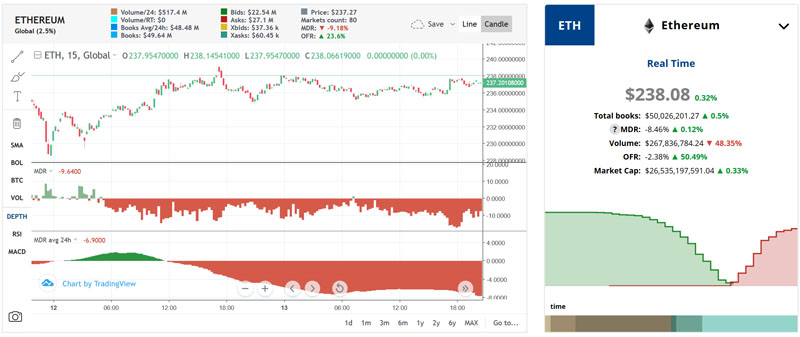Market Depth Ratio (MDR)

Market Depth Ratio (MDR)
The Market Depth Ratio (MDR) indicator is quite simple in that it is a single percentage representation indicating if there is more or less bids or sells (bids or asks) and how much more or less of which one, relative to the asset's total books.
For example, a +25% MDR would indicate that the bids represent 25% more of the total order books than the asks, whereas a -10% MDR would indicate that the asks represent 10% more of the total books than the bids.
We further empower this solution by allowing users to see MDR based on the % of depth of books they have chosen and providing historic MDR in an intuitive and powerful signaling-focused presentation. Comparing bids to asks ratio of the orderbooks is a valuable tool that does well to predict cumulative markets such as combined crypto markets.
To better gauge sentiment at an asset by asset level, we have taken MDR a step further by also examining intra-bids and intra-asks ratio, such as % of asks at 1% compared to % of asks at 10%, also expressed as a ratio percent. This is helpful for identifying orderbooks building at specific market depth zones. We have found that looking at 10% asks ratio compared to 100% asks ratio is quite useful as it shows when asks are building further away than 10% or more from the current price, indicating building bullish sentiment, or vice versa for 10% bids to 100% bids ratio indicating a bearish sentiment by the market.
MDR may provide different signaling for different assets based on an array of factors. Don't expect the Bitcoin order books to signal the same as some low liquidity Ethereum Dapp.
Users can access this data online via Coin Market Flow and historically via our api, learn more from our API Reference or test it directly including multi-market depth analysis on Trade Pane or on the NLP Quant app on NoApp.ai
In market testing by Vantage Crypto and in line with Trade Pane results, using market depth ratio has shown to provide greater reliability than usnig price and volume alone. This is not investment advice, it is advised that each individual investor perform their own due dilligance to determine if a dataset or algorithm is right for their trading practices.